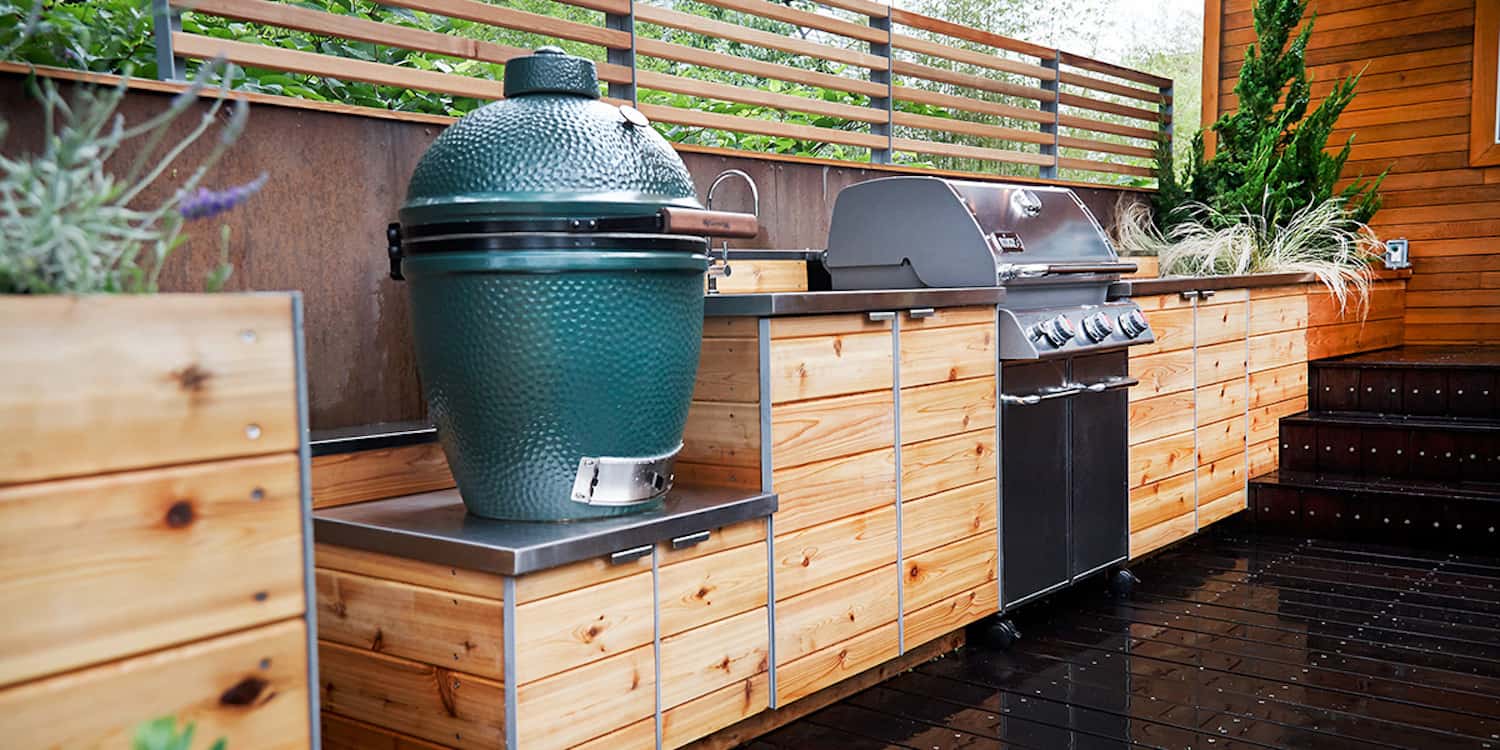Functionality and Design Considerations: Wood Outdoor Kitchen Cabinets

Outdoor kitchen cabinets, particularly those crafted from wood, offer a unique blend of functionality and aesthetic appeal. They enhance the practicality and visual charm of your outdoor living space, providing ample storage and a cohesive design element.
Types of Wood Outdoor Kitchen Cabinets
Wood outdoor kitchen cabinets come in various styles and configurations to cater to different needs and preferences. Here are some common types:
- Base Cabinets: These cabinets are typically placed on the ground and provide essential storage for cookware, utensils, and other kitchen essentials. They often feature drawers and doors for easy access.
- Upper Cabinets: Mounted above the countertop, upper cabinets offer additional storage space for less frequently used items, maximizing vertical space in your outdoor kitchen.
- Island Cabinets: Ideal for creating a central gathering point in your outdoor kitchen, island cabinets can provide additional counter space, storage, and even seating options.
- Specialty Cabinets: These cabinets cater to specific needs, such as bar units for serving drinks, wine racks for storing your favorite vintages, and specialized cabinets for storing grills or other outdoor appliances.
Essential Features to Consider
When selecting wood outdoor kitchen cabinets, several key features are crucial to ensure functionality and longevity.
- Storage Capacity: Consider the size of your outdoor kitchen and the amount of storage you need. Cabinets with adjustable shelves and drawers can maximize storage efficiency.
- Accessibility: Choose cabinets with easy-to-open doors and drawers, particularly for frequently used items. Consider the height and placement of cabinets to ensure accessibility for everyone.
- Organization: Invest in organizers, dividers, and other accessories to maintain order within your cabinets. This will make it easier to find what you need and keep your outdoor kitchen tidy.
Visual Representation of a Well-Organized Wood Outdoor Kitchen Layout, Wood outdoor kitchen cabinets
Imagine a spacious outdoor kitchen featuring a sleek, L-shaped countertop crafted from durable, weather-resistant materials. The countertop extends from a brick wall, providing ample workspace for food preparation.
On one side of the countertop, a row of base cabinets offers ample storage for cookware, utensils, and serving dishes. These cabinets feature drawers and doors for easy access and organization. Above the base cabinets, a series of upper cabinets provide additional storage for less frequently used items, maximizing vertical space.
At the corner of the L-shaped countertop, a large island cabinet serves as a central gathering point. This cabinet incorporates a built-in sink, a small refrigerator, and a wine rack, adding functionality and style. The island also features a breakfast bar with seating for three, creating a welcoming space for dining and socializing.
On the opposite side of the countertop, a built-in grill sits adjacent to a dedicated cabinet for storing grilling tools and accessories. This setup ensures a smooth workflow for grilling and entertaining.
The entire outdoor kitchen is illuminated by strategically placed pendant lights, creating a warm and inviting ambiance for evening gatherings.
Maintenance and Longevity

Outdoor wood kitchen cabinets, while beautiful and durable, require proper maintenance to withstand the elements and preserve their beauty. This involves a combination of preventative measures and regular care to ensure longevity and prevent damage from weather, pests, and everyday use.
Weather-Resistant Finishes and Sealants
Protecting wood from the elements is crucial for outdoor kitchens. Applying weather-resistant finishes and sealants creates a barrier against moisture, UV rays, and other environmental factors that can cause damage.
- Oil-based finishes, such as teak oil, penetrate the wood, providing deep protection and enhancing the natural beauty of the grain. These finishes need to be reapplied regularly, typically every 6-12 months, depending on exposure and climate.
- Polyurethane finishes offer a durable, hard-wearing surface that repels water and resists fading. They come in both oil-based and water-based formulations, each with its own pros and cons. Oil-based polyurethanes offer better protection against UV rays but require more time to dry and can be more difficult to apply. Water-based polyurethanes are easier to apply and dry faster but may offer slightly less protection against UV damage.
- Varnish, a clear, protective coating, enhances the wood’s natural beauty while providing a durable barrier against moisture and UV rays. Varnish comes in various finishes, from gloss to matte, allowing you to choose the desired aesthetic for your outdoor kitchen.
- Penetrating sealants, such as wood preservatives, protect against decay, mildew, and insects. They are particularly useful for outdoor kitchens in humid climates or areas with high insect activity.
Cleaning and Restoration
Regular cleaning is essential to maintain the appearance and longevity of wood outdoor kitchen cabinets. Cleaning methods vary depending on the finish and the type of dirt or stain.
- Mild soap and water are generally sufficient for regular cleaning. Use a soft cloth or sponge and avoid abrasive cleaners that can scratch the surface.
- For tougher stains, a solution of baking soda and water can be used. Apply the paste to the stain, let it sit for a few minutes, then scrub gently with a soft brush.
- For stubborn stains, consider using a specialized wood cleaner designed for outdoor use. Follow the manufacturer’s instructions carefully.
Wood outdoor kitchen cabinets – For scratches and other imperfections, sanding and refinishing may be necessary. Start with fine-grit sandpaper and work your way up to a higher grit to smooth out the surface. After sanding, apply a fresh coat of finish to protect the wood and restore its appearance.
Maintenance Schedule
A regular maintenance schedule ensures the longevity of your wood outdoor kitchen cabinets.
- Weekly cleaning: Dust and wipe down the cabinets with a damp cloth.
- Monthly inspection: Check for any signs of damage, such as cracks, scratches, or peeling finish.
- Annual maintenance: Thoroughly clean the cabinets, apply a fresh coat of sealant or finish, and inspect for any signs of pest infestation.
Following these maintenance recommendations will help keep your wood outdoor kitchen cabinets looking their best and ensure they stand the test of time.
